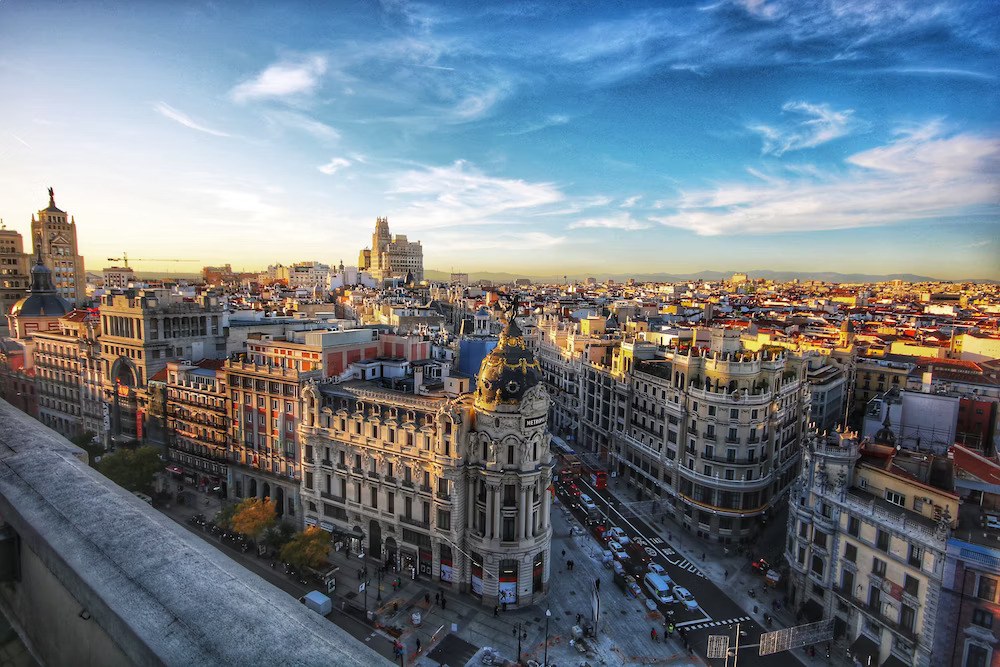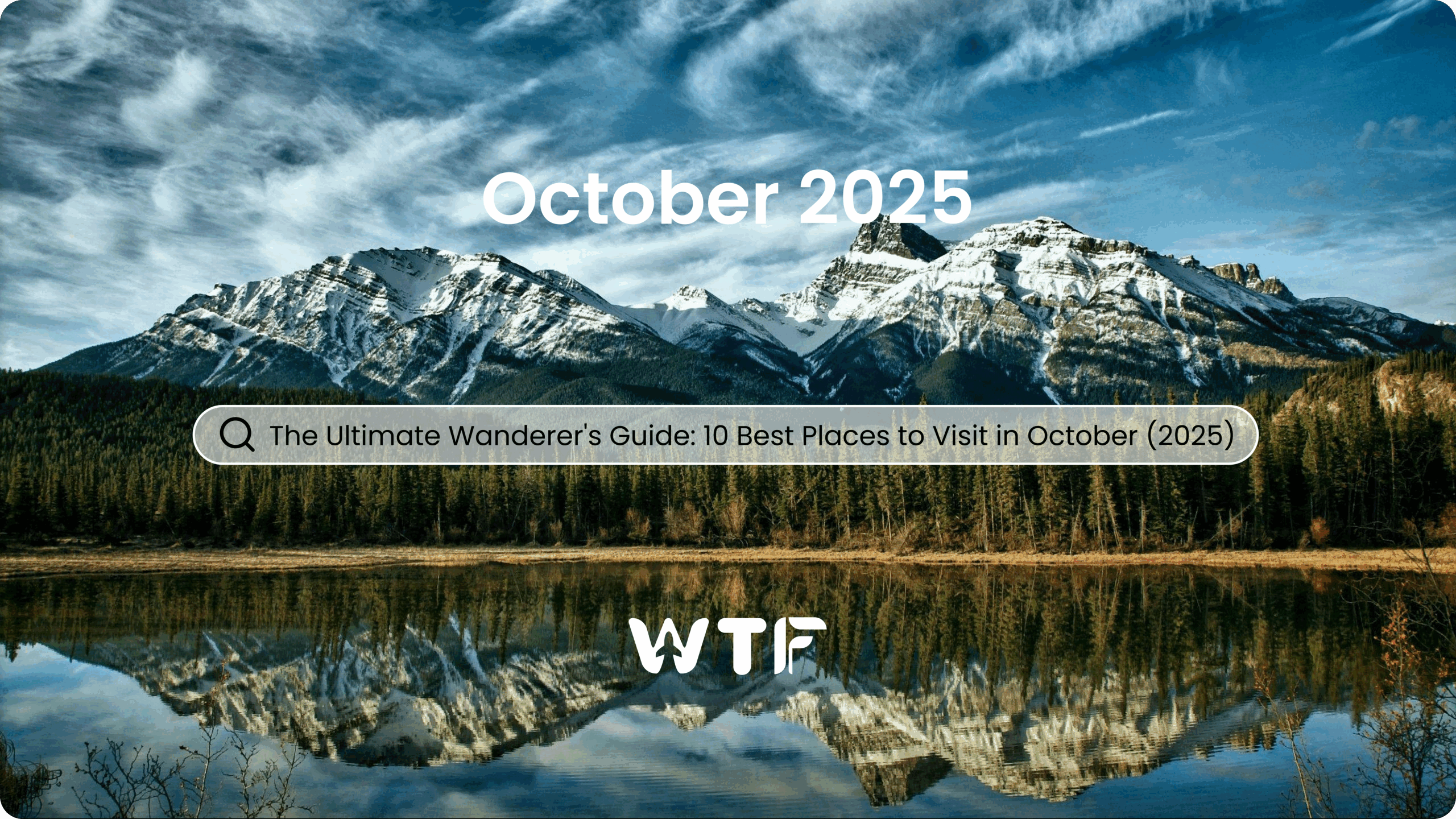Spain, a country renowned for its vibrant culture, historical landmarks, and delectable cuisine, is a captivating destination that promises a diverse and unforgettable travel experience. From the sun-kissed beaches of the Costa del Sol to the architectural wonders of Barcelona and the enchanting streets of Seville, Spain beckons travelers with its irresistible charm. Join us as we embark on a virtual journey to explore the soul-stirring beauty of this Iberian gem.
Spain’s Splendors: Unveiling the Top 5 Must-Visit Destinations
1. Barcelona:- A Cultural Odyssey in Barcelona
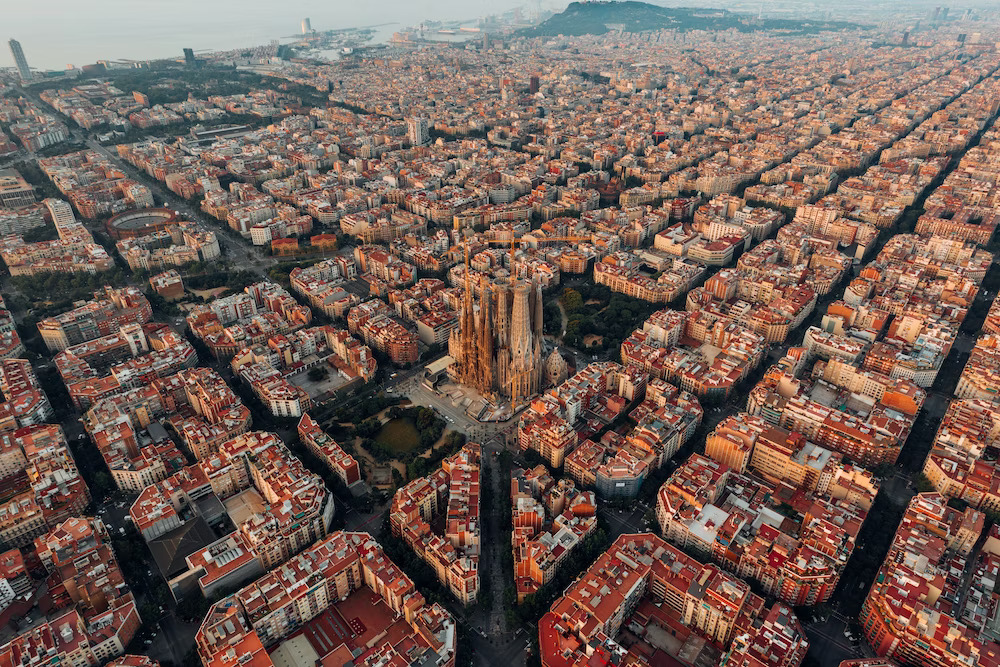
Barcelona, a city known for its unique blend of Gothic and modernist architecture, offers a vibrant cultural experience. Gaudi’s masterpieces like the Sagrada Familia and Park Güell are iconic landmarks. The city’s specialty lies in its lively street culture, artistic flair, and a magnetic energy that captivates visitors.
Public Transport
Barcelona is easily accessible by the AVE high-speed train from major cities like Madrid, with a travel time of approximately 2.5 hours.
- Train (AVE): €50-€100, depending on the class and time.
- Bus: Options available starting from €20-€40.
Must-do activities around that place
- Explore Gaudi’s masterpieces: Sagrada Familia, Park Güell, and Casa Batlló.
- Stroll along La Rambla and indulge in street performances.
- Visit the historic Gothic Quarter and the Picasso Museum.
- Relax on the Barceloneta Beach.
Entrance Fee:
- Sagrada Familia: €20-€30.
- Park Güell: €10-€25.
- Casa Batlló: €25-€40.
2. Seville:- A Flamenco-Fueled Sojourn in Andalusia
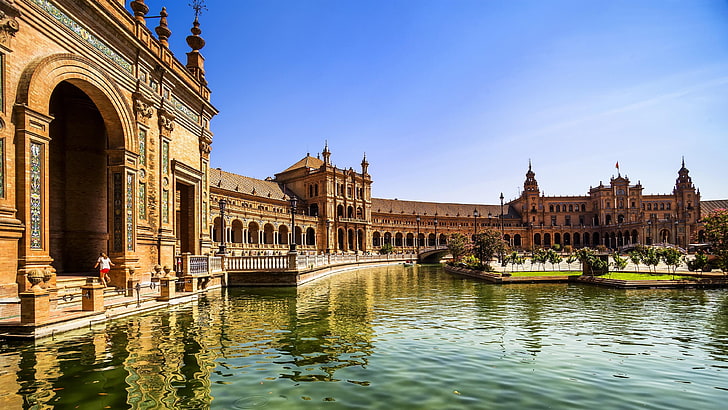
Seville, the heart of Andalusia, enchants with its Moorish architecture, Flamenco rhythms, and vibrant street life. The Alcazar palace and the Giralda tower are emblematic of its rich history, while the Barrio Santa Cruz district offers a maze of charming alleys.
Seville is accessible by the AVE high-speed train from major cities like Madrid, with a travel time of around 2.5 hours.
Public Transport:
- Train (AVE): Approximately €50-€90.
- Bus: Budget-friendly options start from €20-€40.
Must-do activities around that place:
- Visit the Alcazar palace and its stunning gardens.
- Wander through the historic Barrio Santa Cruz district.
- Witness a traditional Flamenco show.
- Climb the Giralda tower for panoramic views.
Entrance Fee:
- Alcazar: €9-€15.
- Giralda Tower: Included with Alcazar ticket.
- Flamenco Show: Prices vary but usually around €20-€40.
Granada:- Unveiling Granada’s Alhambra and Beyond
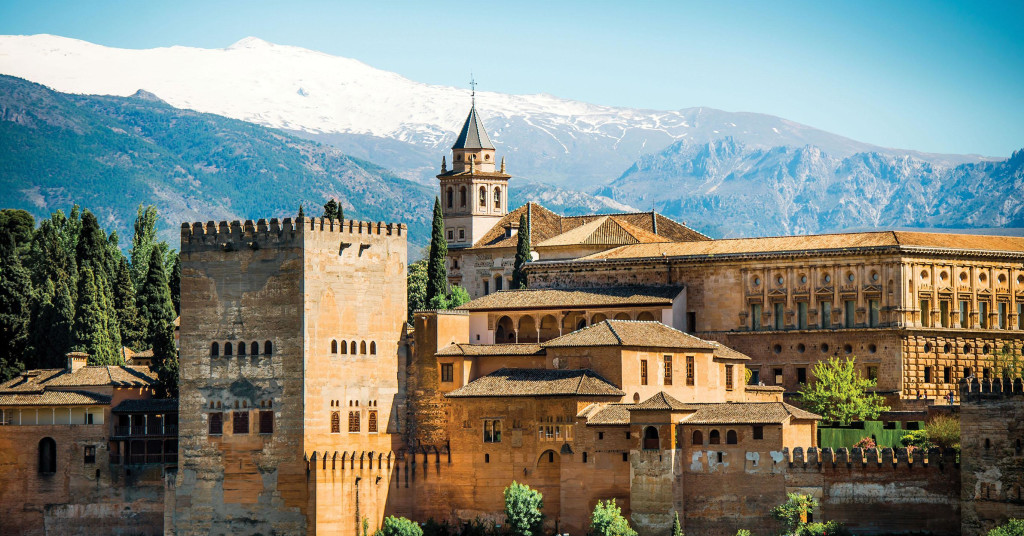
Nestled at the base of the Sierra Nevada mountains, Granada is synonymous with the Alhambra, a stunning Moorish palace and fortress complex. The city exudes a unique blend of Moorish and Spanish influences, creating an enchanting atmosphere.
Public Transport:
Granada can be reached by train or bus from cities like Madrid, with the train journey taking around 4 hours.
- Train: Approximately €50-€90 (AVE high-speed train).
- Bus: Budget-friendly options start from €20-€40.
Must-do activities around that place:
- Explore the Alhambra and Generalife Gardens.
- Wander through the historic Albayzín neighborhood.
- Visit the Royal Chapel and Granada Cathedral.
- Enjoy the views from the Mirador de San Nicolás.
Entrance Fee:
- Alhambra: €14-€21.
- Albayzín: Free to explore.
- Granada Cathedral: €5-€7.
Madrid:- A Royal Affair in the Heart of Spain
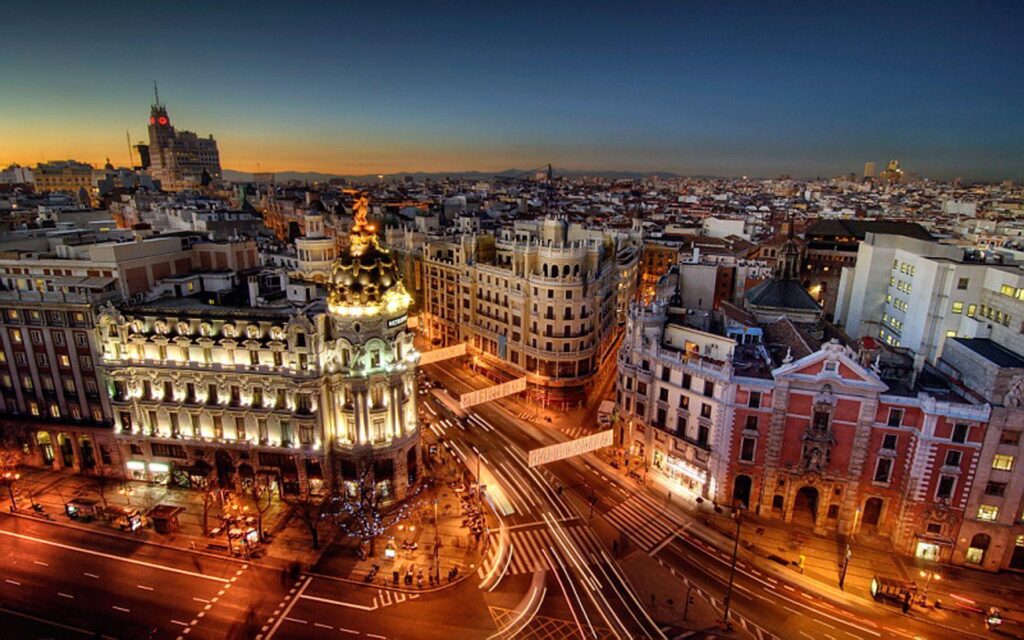
Madrid, the capital of Spain, is a city where historic landmarks meet contemporary culture. The Royal Palace, Prado Museum, and Retiro Park showcase the city’s grandeur. Madrid’s specialty lies in its lively plazas, world-class art, and a culinary scene that tantalizes the taste buds.
Public Transport:
Madrid is the central hub and can be reached by AVE high-speed train from various cities, with travel times varying.
- Train (AVE): Prices vary based on the departure city, ranging from €30-€100.
- Bus: Budget-friendly options start from €15-€40.
Must-do activities around that place:
- Explore the Royal Palace and its opulent rooms.
- Wander through the Prado Museum for a journey through art history.
- Relax in Retiro Park with its beautiful gardens and lake.
- Indulge in tapas at the vibrant Mercado de San Miguel.
Entrance Fee:
- Royal Palace: €10-€15.
- Prado Museum: €15.
- Retiro Park: Free to enter.
Valencia:- A Coastal Paradise Blending Modernity and Tradition

Valencia, located on the southeastern coast, seamlessly blends futuristic architecture with historic charm. The City of Arts and Sciences is a modern marvel, while the historic Old Town and the Turia Gardens offer a glimpse into Valencia’s rich history. The city’s specialty lies in its lively festivals and delicious paella.
Public Transport:
Valencia is well-connected by AVE high-speed trains from major cities like Madrid, with a travel time of around 1.5-2 hours.
- Train (AVE): Prices vary based on the departure city, ranging from €30-€80.
- Bus: Budget-friendly options start from €15-€30.
Must-do activities around that place:
- Visit the futuristic City of Arts and Sciences.
- Explore the historic Old Town and Valencia Cathedral.
- Relax in the Turia Gardens, a former riverbed turned park.
- Indulge in authentic paella at a local restaurant.
Entrance Fee:
- City of Arts and Sciences: Prices vary by attraction.
- Valencia Cathedral: €8-€12.
- Turia Gardens: Free to enter.
Exploring the Must-Visit Tourist Destinations in Spain
1. Las Médulas
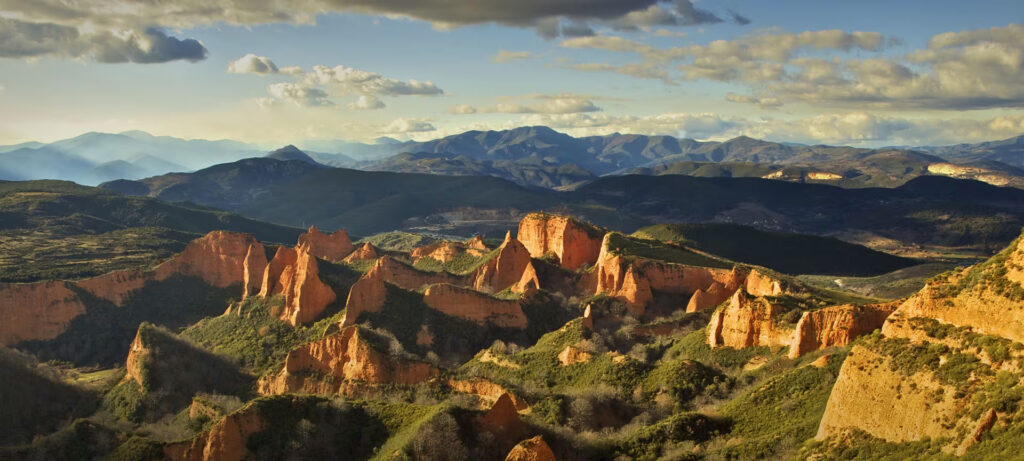
Nestled in the region of León, Las Médulas is a UNESCO-listed cultural landscape renowned for its ancient Roman gold mines. Its specialty lies in the surreal red-gold landscape, shaped by centuries of mining activities.
How to get there using public transport from mainland:
Take a train or bus to Ponferrada from major cities like Madrid or León. From Ponferrada, local buses connect to Las Médulas.
- Bus: Approximately 5-10 euros.
Must-Do Activities:
- Explore the Quarry Pools: Discover turquoise pools formed by ancient mining activities.
- Hike the Trails: Walk through scenic trails for panoramic views.
- Visit Mirador de Orellán: Enjoy breathtaking vistas from this viewpoint.
Entrance Fee:
- Access to Las Médulas is generally free, but some guided tours or specific areas may have fees.
2. Ujué Village
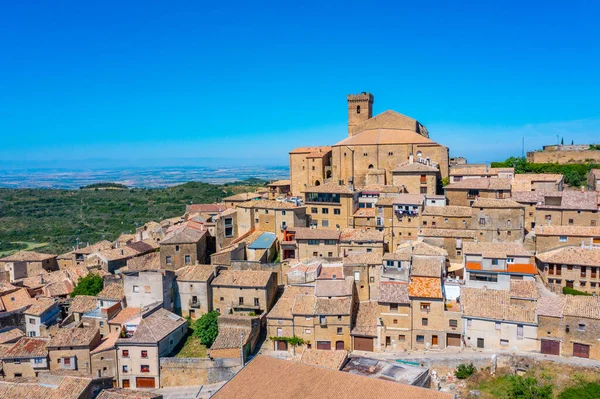
Perched on a hill in Navarre, Ujué is a charming medieval village surrounded by ancient walls. Its specialty lies in the well-preserved architecture and the stunning panoramic views of the surrounding countryside
How to get there using public transport from mainland:
Take a train or bus to Pamplona from major cities like Barcelona or Madrid. From Pamplona, buses or taxis can reach Ujué.
- Bus or Taxi: Approximately 10-15 euros.
Must-Do Activities:
- Visit the Basilica: Explore the medieval Basilica of Santa María.
- Walk the Ramparts: Stroll along the ancient city walls.
- Enjoy Local Cuisine: Indulge in Navarrese gastronomy in local eateries.
Entrance Fee:
- The village is open for exploration, and there is generally no entrance fee.
3. Cudillero’s Hidden Harbors
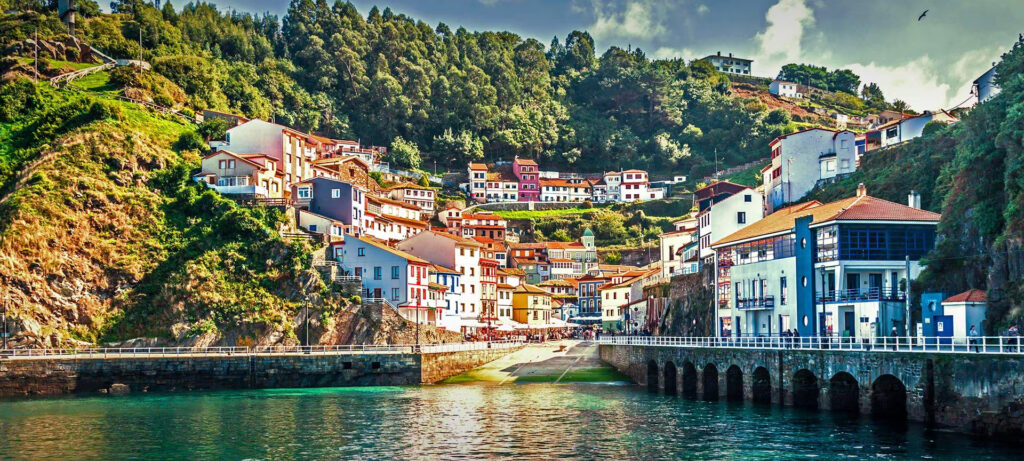
Tucked away on the Asturian coast, Cudillero is a picturesque fishing village with hidden harbors and colorful houses. Its specialty lies in the intimate charm of its secret corners.
How to get there using public transport from mainland:
Take a train or bus to Oviedo from major cities like Madrid or Bilbao. From Oviedo, buses connect to Cudillero.
- Bus: Approximately 10-15 euros.
Must-Do Activities:
- Explore the Hidden Harbors: Discover secluded corners of the fishing village.
- Enjoy Fresh Seafood: Indulge in the local catch at waterfront restaurants.
- Climb to the Lighthouse: Hike to the Faro de Cudillero for panoramic views.
Entrance Fee:
- Access to Cudillero’s harbors is generally free, but some attractions may have fees.
4. Rupit
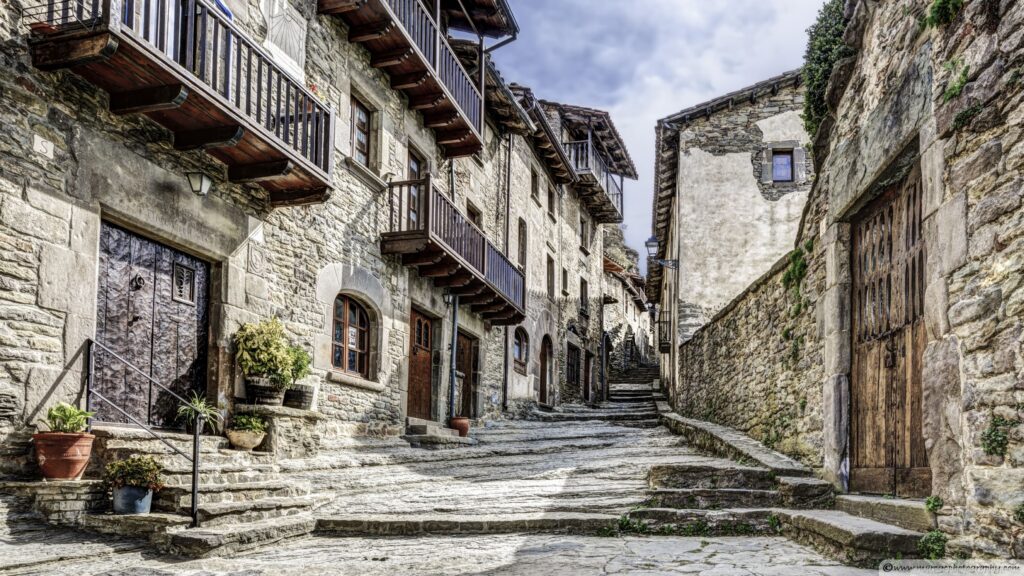
Nestled in the Collsacabra Mountains of Catalonia, Rupit is a medieval village suspended in time. Its specialty lies in the cobblestone streets, historic buildings, and the iconic hanging bridge.
How to get there using public transport from mainland:
Take a train or bus to Vic from major cities like Barcelona or Girona. From Vic, buses connect to Rupit.
- Bus: Approximately 10-15 euros.
Must-Do Activities:
- Cross the Hanging Bridge: Experience the thrill of the Pont Penjat.
- Visit the Church of Sant Miquel: Explore the medieval church with stunning views.
- Hike to Salt de Sallent: Enjoy the natural beauty of the waterfall.
Entrance Fee:
- The village is open for exploration, and there is generally no entrance fee.
5. Cazorla’s Secret Waterfalls
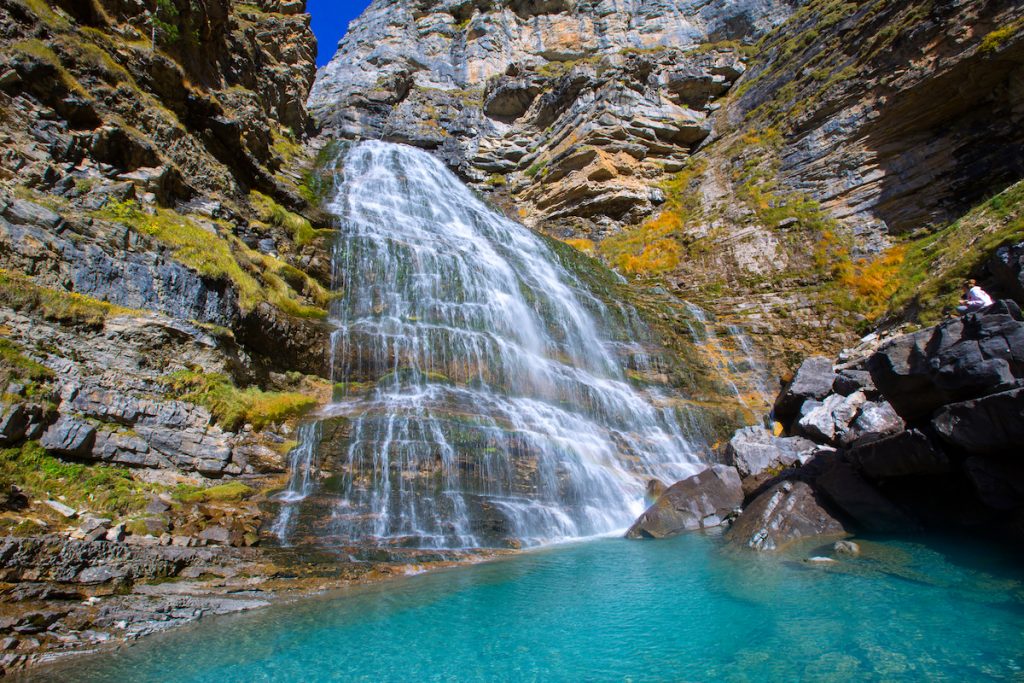
Located in the Sierra de Cazorla in Andalusia, Cazorla offers hidden waterfalls surrounded by lush landscapes. Its specialty lies in the tranquility of these secluded natural wonders.
How to get there using public transport from mainland:
Take a bus to Cazorla from major cities like Granada or Jaén. From Cazorla, local buses or taxis can reach the waterfalls.
- Bus or Taxi: Approximately 10-15 euros.
Must-Do Activities:
- Hike to La Cerrada de Utrero: Explore the scenic trail leading to the waterfalls.
- Picnic by the Water: Enjoy a peaceful moment amidst nature.
- Birdwatching: Discover the rich biodiversity of the Sierra de Cazorla.
Entrance Fee:
- Access to the waterfalls is generally free, but guided tours may have fees.
These hidden gems in Spain promise a journey off the beaten path, where the whispers of history, the charm of medieval villages, and the serenity of nature invite travelers to experience the country through the eyes of locals.
Exploring Spain on a Budget: A Comprehensive Guide to Affordable Travel
1. Currency and Tips to Save Money:
Currency:
- Spain uses the Euro (€) as its official currency.
Tips to Save Money:
- Eat Where Locals Eat: Venture to local markets and tapas bars for affordable and authentic meals.
- Free Museum Days: Take advantage of free entry days to museums and cultural sites.
- Public Transport Passes: Opt for multi-day passes for public transportation to save on individual fares.
2. Budget Accommodations and Locations to Stay On Budget:
Options:
- Hostels: Cities like Barcelona and Madrid have a variety of budget-friendly hostels catering to travelers.
- Pensions and Guesthouses: Look for family-run establishments for a more intimate experience.
- Budget Hotels: Explore budget hotel options, especially in less touristy areas.
Locations:
- Malasaña, Madrid: Known for its bohemian atmosphere, Malasaña offers budget-friendly accommodations.
- El Raval, Barcelona: This vibrant neighborhood has affordable hostels and guesthouses.
- Santa Cruz, Seville: Explore the charming streets of Santa Cruz for budget accommodations.
3. Public Transport and Its Price:
Public Transport:
- Metro and Buses: Most cities have efficient metro and bus networks for getting around.
Price:
- Single Ticket: Typically costs around 1.50 to 2.50 euros.
- Transport Passes: Day passes or rechargeable transport cards may offer better value for longer stays.
4. Local SIM Provider and Best Plan for Tourists:
SIM Provider:
- Major providers include Movistar, Vodafone, and Orange.
Best Plan for Tourists:
- Look for prepaid SIM cards with data for internet access and local calls.
- Tourist packages often include data, calls, and text options for a specific duration.
5. Basic Words in Local Language:
- Hello: Hola
- Thank you: Gracias
- Goodbye: Adiós
- Please: Por favor
- Excuse me: Perdón
- Yes: Sí
- No: No
6. Local Cuisine and Must-Try Foods:
Must-Try Foods:
- Tapas: Small appetizers that showcase Spain’s diverse culinary offerings.
- Paella: A traditional rice dish with various ingredients like seafood or rabbit.
- Churros with Chocolate: Fried dough pastries served with rich chocolate sauce.
- Jamon Iberico: Cured ham, a Spanish delicacy.
Cost:
- Tapas: Prices vary, but they are often affordable, especially in local bars.
- Paella: In restaurants, a serving may cost around 10-20 euros per person.
- Churros with Chocolate: A popular street food, costing around 3-5 euros.
- Jamon Iberico: Prices can vary, but it’s a pricier delicacy.
Spain’s rich culture, diverse landscapes, and culinary delights can be enjoyed even on a budget, with numerous options for economical travel and authentic experiences.
A Glimpse into Its Historical and Geological Marvels
Spain, a captivating tapestry of history and geology, invites travelers on a journey through time and diverse landscapes. Let’s unravel the secrets embedded in its ancient rocks and storied past.
Historical Mosaic:
Spain’s history reads like an epic novel, with each chapter leaving an indelible mark on its character. The Iberian Peninsula witnessed the rise and fall of empires – from the Phoenicians, Greeks, and Carthaginians to the mighty Roman conquest. Roman arches and aqueducts, such as the one in Segovia, stand testament to their enduring influence.
The medieval period heralded the Moorish era, a time of great intellectual and architectural advancements. The Alhambra, a fortress and palace in Granada, and the Great Mosque of Córdoba reflect the exquisite Moorish craftsmanship that still captivates visitors today.
The Reconquista, a centuries-long struggle, culminated in 1492 when the Catholic Monarchs, Ferdinand and Isabella, completed the recapture of the Iberian Peninsula. This pivotal year marked not only the end of Islamic rule but also the beginning of Christopher Columbus’s journey to the Americas.
Geological Wonders:
Spain’s geological diversity mirrors its historical richness. The Pyrenees, a formidable mountain range separating Spain from France, offer breathtaking vistas and challenging hiking trails. In contrast, the Sierra Nevada in the south boasts Spain’s highest peak, Mulhacén, and is a haven for winter sports enthusiasts.
The Bardenas Reales, a semi-desert region in Navarre, showcases a stark yet mesmerizing landscape sculpted by erosion. In the Canary Islands, volcanic activity has created otherworldly terrain on islands like Tenerife and Lanzarote.
The coastal cliffs of the Costa Brava and the pristine beaches of the Balearic Islands are geologic treasures shaped by the relentless forces of the Mediterranean Sea. Caves such as the Caves of Aggtelek Karst and Slovak Karst, a UNESCO World Heritage site, offer a glimpse into Spain’s subterranean wonders.
Spain’s geological story is etched in its rocks, from the limestone formations in Picos de Europa National Park to the metamorphic rocks of the Sierra de Guadarrama. The country’s diverse geology not only defines its landscapes but also influences its ecosystems and biodiversity.
A Harmonious Blend:
In Spain, history and geology dance in harmony, creating a tapestry of landscapes and narratives. Whether exploring ancient Roman ruins, wandering through Moorish palaces, or marveling at the geological wonders of its mountains and coastlines, every step is a journey through time.
Spain beckons adventurers to unravel its geological mysteries and discover the layers of history etched in its stones. From the towering peaks to the sun-drenched plains, each landscape tells a story that adds to the richness of Spain’s cultural and natural heritage. So, set forth on a voyage to uncover the treasures of Spain – where history and geology intertwine, creating a captivating narrative etched in rock and time.
Wanderer’s Word
As the final chord of your Spanish sojourn, may the echoes of vibrant Flamenco rhythms and the lingering aromas of paella accompany you beyond the sun-kissed landscapes. Spain, a tapestry of rich history, warm hospitality, and tantalizing flavors, unfolds its diverse wonders to every traveler. Whether wandering through the narrow streets of Barcelona, savoring tapas in Madrid, or exploring the timeless Alhambra in Granada, each moment in Spain leaves an indelible mark. As you bid ‘adiós’ to this enchanting land, carry with you not just photographs but a collection of stories etched in the heart, promising a timeless connection to the soul of Spain. Until the next adventure, ¡Hasta luego, España!
"El que mucho abarca, poco aprieta- He who grasps at too much, holds little"


